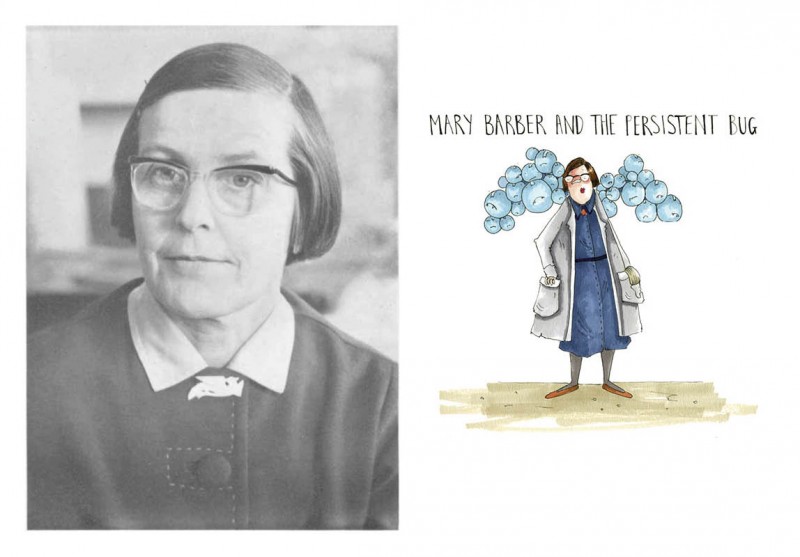By Jenna Stevens-Smith
April 26, 2018
Time to read: 4 minutes
To celebrate the pioneering scientists featured in the 2018 edition of Heroes of Health we will be writing articles about each of those featured.
We will begin with Professor Mary Barber (1911-1965), a pioneering clinical bacteriologist. Mary was well known for her knowledge and practical achievements in control of cross infection in hospitals and for her pioneering work in the ‘restricted antibiotics’ trials at Hammersmith Hospital, the home of LMS.

Born on the 3rd April 1911 to Hugh Barber MD FRCP and Ethel M. Howlett. She was their third daughter and the only one to follow her father into medicine. Mary undertook her clinical training at the London School of Medicine for Women in 1928 and obtained the London MBBS in 1936 and her MD in 1940. She was appointed as Assistant Pathologist and lecturer in bacteriology at the British Postgraduate Medical School (BPMS), Hammersmith Hospital in 1940 and promoted to Reader in Bacteriology in 1948 and Professor of Clinical Bacteriology in 1963. Mary Barber died of severe injuries received in a car accident on 11 September 1965 at the age of 54.1
She was revered by her colleagues for her outstanding scientific qualities which Professor Pollock describes in her Obituary in the Journal of Clinical Pathology.2
“For those of us in the domain of academic bacteriology, who knew and worked with her over many years, this was unquestionably her ability to grasp the importance of applying basic biochemical and genetical principles and knowledge to the practice of medical bacteriology. Not only this, but she would work with equal vigour and effectiveness in the other direction. With Mary around, it just was not possible for microbial geneticists or molecular bacteriologists to remain in their holes or stuck up in their ivory towers. Their problems became alive in a fresh urgent sense. She never pretended to be a biochemist or geneticist herself: but she certainly was not frightened of either biochemistry or genetics and she had a great sense of how to mobilize them-often through. The work of her colleagues, collaborators and assistants- for her own purposes. If only there were more such personalities in clinical pathology!”
Mary’s remarkable influence was demonstrated through clinical colleagues following her stringent policy for the agreed use of antibiotics to help control hospital infections. As is illustrated in the story ‘Mary Barber and the persistent bug’ in Heroes of Health.
Mary spent most of her career at Hammersmith Hospital in the then British Postgraduate Medical School. She used epidemiological and in vitro methods to study the spread of staphylococcal infection in hospitals. This included phage typing to identify the strains and identifying that the nurses were carrying the infection between wards. In 1947 she published a paper in the British Medical Journal on Staphylococcal infection due to Penicillin-resistant Strains.3 She spoke widely about antibiotic resistance and published many papers on the topic throughout the 1950s and 60s.1
Mary’s work and interventions helped progress the understanding of microbial resistance and minimised the spread of infection in hospitals. We are delighted to be able to share her story, a hidden hero of clinical bacteriology.
References
1. L.P. Garrod, ‘Mary Barber 3 April 1911–11 September 1965,’ Journal of Pathology and Bacteriology, 92 (1966), 603–10 https://doi.org/10.1002/path.1700920247
2. M.R. Pollock Mary Barber Obituary J Clin Pathol: Nov (1965) 10.1136/jcp.18.6.697 http://jcp.bmj.com/content/jclinpath/18/6/697.full.pdf
3. Barber, M. (1947). Staphylococcal Infection due to Penicillin-resistant Strains. British Medical Journal, 2 (4534), 863–865. https://www.ncbi.nlm.nih.gov/pmc/articles/PMC2056216/